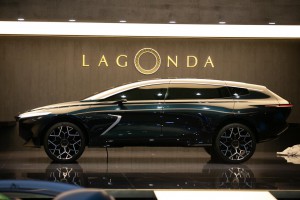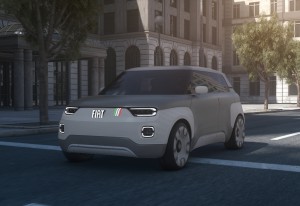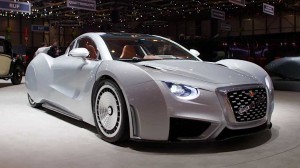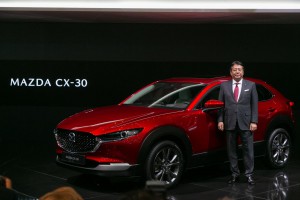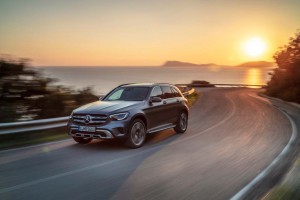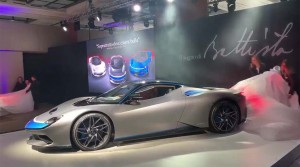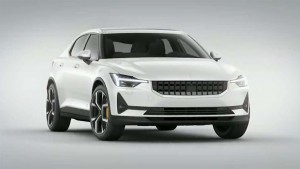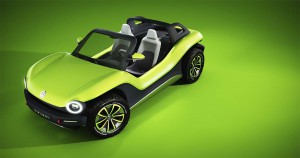
This year's Geneva Motor Show was smaller than in year's past, but there were plenty of debuts for the press to cover.
It may be snowy up in the hills outside Geneva, but things were decidedly green inside Palexpo, the sprawling convention center that serves as home to the city’s annual auto show. The event wasn’t quite as busy this year, a number of automakers choosing to sit things out, as has been the growing industry trend. That said, there were some significant debuts during the Geneva Motor Show media preview.
And green really was the word, manufacturers rolling out more than a score of environmentally friendly products. That included quite a few all-electric models, but also hybrids, plug-ins and even a breakthrough gas engine.
As always, Geneva covered a broad spectrum of product segments, from little city cars, such as the Honda e, all the way up to hypercars like the 1,900 horsepower Pininfarina Battista. Here’s a look at 10 of our favorites among the new products that debuted at the 2019 Geneva Motor Show:
Alfa Romeo Tonale
The Alfa Romeo Tonale looks much like a downsized version of the Italian automaker’s first crossover, the Stelvio. Though officially a “concept,” a production Tonale will go into production in the coming year and will offer an optional plug-in hybrid drive system that will let it travel dozens of miles in all-electric mode, with a gas engine firing up when the battery is drained, so it can keep going. Alfa’s approach to electrification is telling, however. PHEVs will serve as the top rung in the brand’s performance ladder.
Aston Martin Lagonda All-Terrain Concept
The crossover prototype is one of several Geneva products heralding the return of long-dead brands. In this case, however, Aston is looking very much to the future with the first model to be badged Lagonda in decades. This is just a show car, we’re reminded. But a production crossover is due to market in little more than a year’s time. And, like the All-Terrain Concept, it will be all-electric. In fact, all future Lagonda models will be battery powered, according to Aston chief Andy Palmer. Incidentally, the Lagonda is one of three products Aston Martin unveiled in Geneva this year.
Fiat Concept Centoventi
Fiat is hoping this all-electric concept with its unique approach to, well, uniqueness will engender warm and fuzzy feelings like the Fiat 500 that gained popularity in the 1950s. The Centoventi, which means “one hundred and twenty” in Italian, is aimed at giving young people a city car that they can completely customize. While the main body comes in just one color, the car can be outfitted with four different color roofs, fenders and wheel covers. The interior is completely customizable as well, allowing this vehicle to be whatever the owner wants it be or needs, even as those needs change over the years. Even the battery size can be changed to extend range all the way to 310 miles.
Hispano Suiza Carmen
The name, Hispano Suiza, has special meaning to classic car fans, having produced some of the most striking coach built products from the golden era of pre-War automotive design. After more than a 70-year absence, the brand has been reborn, arriving in Geneva with a fully-electric “hyperlux grand tourer” dubbed Carmen, granddaughter of the company founder. The retro styling recalls the Dubonnet Xenia of 1938, but the hand-crafted carbon fiber monocoque spaceframe and battery drivetrain makes it a very forward-looking option for exotic buyers.
Imagine by Kia
“Today’s drivers understandably have many questions about electric cars,” said Gregory Guillaume, Kia’s vice president of design. This concept vehicle is designed not only to address concerns about cost, range and charging, but also to “address those concerns … from an emotional point of view,” with a striking design. Don’t expect to see the Imagine go into production, at least in quite this form. But Kia and sibling Hyundai have developed an all-new, all-electric vehicle architecture, and the Geneva concept gives us a good hint as to what design direction the Kia brand’s future models will be following.
Mazda CX-30
The new Mazda crossover breaks ground in a number of ways. Its primary power comes from its new SkyActiv-X internal combustion engine. It is the first production model ever to use homogeneous charged compression, which brings together the best attributes of a diesel and a gas engine. To enhance the CX-30’s performance, however, Mazda has also given it a mild hybrid system using a small, 24-volt lithium-ion battery pack paired to an electric motor. Now, add the latest take on Mazda’s Kodo design language and a roomy interior.
Mercedes-Benz GLC
Normally, we’d only give short notice to a vehicle that’s officially getting a mid-cycle refresh, but the new 2020 GLC has a lot going for it, including more extensive exterior and interior tweaks than you usually see at this stage of its lifecycle. There’s also the new MBUX personal voice assistant technology and a new turbo-four engine. Now, all that said, we’re really in love with another model on the Mercedes stand, the new CLA wagon. Sadly, it won’t be coming to a U.S. market that simply doesn’t understand the concept.
Pininfarina Battista
The Pininfarina Battista would push the limits no matter what was under the hood though, in this case, its four electric motors draw power from a 120 kilowatt-hour lithium-ion battery pack and can produce 1,900 horsepower – enough to propel it to 60 in less than two seconds. The Italian design house worked with Croatian supercar maker Rimac on the powertrain which, for those who drive sensibly could yield 280 miles per charge. For those who want to push the extremes, it will be limited to 217 mph – except for a track-ready version promised to reach even higher numbers.
Polestar 2
Set to compete with the likes of the Tesla Model 3, the new offering from Volvo’s performance brand-within-a-brand is its first all-electric model. The battery pack stores a total of 78 kilowatt-hours of energy. Using the European test range is a rated 350 miles, though U.S. numbers will be lower. The five-door hatchback is powered by a pair of electric motors producing a total of 408 horsepower and 660 pound-feet of torque. Since electric motors generate much of that torque as soon as the motors turn on, the Polestar promises aggressive launches, with 0 to 60 times promised at “less than 5 seconds.”
Volkswagen ID Buggy
In its day, the VW Beetle was the vehicle of choice for those who wanted to surf the sand, more than 300,000 of them converted into dune buggies. The German automaker surprised its Geneva audience with a retro-futuristic concept showing what an all-electric dune buggy might look like. It uses the same MEB “architecture” set to be shared by dozens of battery-electric vehicles that VW plans to launch by mid-decade. It also raises the question: is VW getting ready to bring back an all-electric version of the Beetle, the third-generation, gas-powered model set to end production this year.


